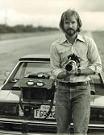The following pictures show this high load smooth disk test wheel Gene Strain introduced to me for the Anzani back in 1978 that was developed by the Hallum and Anderson influences from the North Western USA. Smitty's story about how Ron Anderson showed them how they work at OMC is so vivid a description of how impressive these test wheels are and work, I never again used a Mercury test wheel ( I had worn out 3 Mercs at that point) for any engine after that, be they stock racing Mercurys, my other Anzanis, Modified Mercurys of all displacements from 30, 40, 44, 49 and 60 cubic inch. After rebuilding 2 Quincy Flatheads a D and a 44 inch F, the same test wheels were applied giving those same hold down the revs, load and tune effects that really set up the engines well. From these pictures it is quite easy to develop your own sets of this flat disk testwheels.


 Thanks:
Thanks:  Likes:
Likes: 








Bookmarks